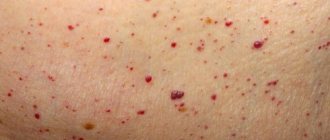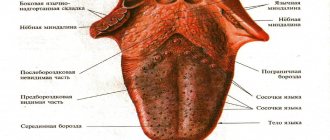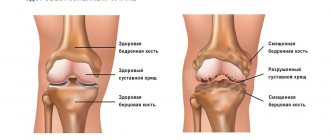Most often, lipomas on the back, shoulders, hips, legs and other parts of the body form in women aged 30 to 50 years. Scientists have not yet figured out what this pattern is connected with.
The formation occurs in the subcutaneous connective tissue, can penetrate inside and be located between the vascular bundles and muscles. Visually it looks like a lump, and upon palpation it resembles a fairly soft nodule that can easily move.
It almost never causes any pain. It extremely rarely becomes malignant and generally does not harm health. Over time, it may gradually increase in size. When located in places where joints are bent, it can limit movement in them.
General information
The term lipoma comes from the Latin word for fat.
This is a benign connective tissue tumor. It develops in a layer of loose connective tissue under the skin and can penetrate deep, developing between the muscles and bundles of blood vessels to the periosteum. The ICD-10 code for lipoma is D17. 9 (benign neoplasm of adipose tissue of unspecified location). Speaking about lipoma - what kind of disease it is, it should be noted that among the people, the disease, which is scientifically called lipoma, is often defined as a wen. This tumor grows slowly, has a soft consistency, is mobile and painless. Most often, this formation develops in places where there is little adipose tissue: on the shoulders, upper back, outside the thigh. In most cases, such a tumor does not pose a danger from the point of view of degeneration into malignant. But in rare cases, lipomas in the subcutaneous fat still degenerate into liposarcoma (malignant formations).
Lipoma develops from adipose tissue and is one of the most common soft tissue tumors. Often such formations are multiple, sometimes they appear symmetrically. There are many varieties of such tumors that have certain morphological and clinical features. Such tumors develop equally often in men and women. The average age of appearance of lipomas is 40-60 years.
This article will discuss what a lipoma looks like, why it appears, as well as how to distinguish a wen from a tumor and get rid of such a formation.
What does a lipoma look like?
Fatty soft subcutaneous formations are not fixed in one place and move slightly if you press on them. The skin over the lipoma does not change. It looks healthy - does not darken, does not redden and maintains normal elasticity.
How big does a lipoma look?
New growths grow very slowly. Within a few years they reach 2-3 cm, and only in the rarest cases do they grow up to 10 cm. Such lipomas are called giant.
The larger the lipoma, the more dangerous it is. Not by itself, but because it puts pressure on neighboring tissues and can disrupt blood circulation. In addition, large tumors are a serious cosmetic problem, especially when they form on exposed parts of the body.
Sometimes not one lipoma grows, but several. But most patients have no more than one or two. Dozens of lipomas are rare. Mostly men face this problem. Doctors call the phenomenon multiple familial lipomatosis.
From the description of lipomas, let's move on to the reasons for their occurrence.
Pathogenesis
Currently, there is no consensus on the pathogenesis of lipoma. In some sources, this tumor is considered hypertrophied adipose tissue, in others – a true neoplasm. When tumors occur in areas where adipose tissue is absent, their development is associated with metaplastic transformation of connective tissue cells.
There is a theory that local accumulation of adipocytes occurs due to chromosomal abnormalities affecting the genes that are responsible for the synthesis of TAG lipase. This enzyme regulates the breakdown of fats and energy supply to the body.
There is also a theory that subcutaneous wen appears due to excessive deposition of lipids in adipose tissue cells. Certain prerequisites for the occurrence of such formations appear already during the period of embryonic development, when adipose tissue is just being formed. Subsequently, in adulthood, a wen may form on the arm under the skin or a tumor in other places.
Lipoma symptoms
In 95% of cases, lipomas are localized under the skin, mainly in the back and thighs, although other locations are possible. The remaining 5% are lipomas of internal organs, intermuscular and brain (extremely rare localization).
Under the skin, a lipoma looks like a tumor-like formation of different sizes, soft, with clear outlines, usually painless. Over the years it can slowly increase in size, sometimes becoming gigantic. In this case, the tumor begins to sag, and its base stretches, forming a thin stalk riddled with blood vessels.
Sometimes a lipoma can be dense, which is associated with a pronounced proliferation of connective tissue in it. In this case, it is called fibrolipoma or lipofibroma.
Pain is not the leading symptom of lipoma. However, its location in internal organs is often associated with pain due to tumor growth and stretching of the capsule of the corresponding organ. Lipomas often hurt on the face due to its rich innervation and on the neck if they are located close to the spine and compress the spinal roots.
Classification
Fatty tissue can grow in different places. Accordingly, different types of lipoma are formed. All types of wen are determined depending on a number of characteristics (location, structural features - what the formation looks like, histological features, etc.).
Depending on the location, the following types of wen are distinguished:
- Subcutaneous - develops in the subcutaneous fat layer of the skin.
- Retroperitoneal – formed in the fatty tissue of the abdomen.
- Perineural - such tumors surround the nerve trunks and compress them. In this case, the answer to the question of whether a lipoma can hurt is positive. If the wen is inflamed and hurts, you should consult a doctor. Most often, such lipomas develop at the site of the median nerve.
- Intraorgan - can develop in the myocardium, lung and bone tissue.
- Articular-synovial membrane and tendons - develop in the joint cavity, between the tendons.
- Intermuscular or intramuscular - may appear if the lipoma between the muscle fibers was removed, and the adipose tissue was not completely cleared. Such formation often recurs.
- Lumbosacral (epidural) - develop in the spinal canal, near the vertebrae. May appear in patients with Cushing's syndrome , with benign tumors in the pituitary gland .
- Angiolipoma is a lipoma of the kidney.
- Adenolipoma - localized near the sweat glands.
- Myolipoma - forms between muscles and tendon fibers.
Depending on the characteristics of the structure, the following are determined:
- Classic - formed exclusively from adipose tissue.
- Ring-shaped cervical - develop in the subcutaneous fat tissue, forming a kind of “necklace” around the neck.
- Tree-like - appear against the background of inflammation around the joints. They grow inside large joints.
- Capsulated - grow in internal organs on the skin-fatty tissue of their internal surfaces.
- Cavernous (angiolipomas) are formations through which blood vessels penetrate.
- Petrified (ossified) - appear when calcium salts are deposited.
- Lipofibromas (soft) - in the cavity of such formations there is adipose tissue and fluid.
- Fibrolipomas (dense) - the formation contains adipose and connective tissue.
- Pedicled - formations that have detached from the epithelium and formed a stalk
- Myxolipomas develop when mucous and fatty tissues mix.
- Myelolipomas - such formations include hematopoietic elements. They are formed in the pelvis, retroperitoneum and adrenal glands.
- Hibernomas are atypical formations that appear when metabolic processes are disrupted and brown fat is actively formed in the body.
Depending on the histological structure, the following types of lipomas are distinguished:
- Nodular - formations inside the capsule are divided into lobules of different sizes. In most cases, lipomas of this type are formed.
- Diffuse - develop mainly in systemic diseases associated with impaired fat metabolism.
Why are lipomas dangerous?
Lipomas are harmless.
Most of them.
They grow very slowly and usually do not cause discomfort. Until they become too large and begin to put pressure on surrounding nerves, organs and blood vessels. Then pain arises.
If you have been diagnosed with a lipoma, this is not a death sentence. Most likely, you will live with her for many years and will rarely remember her existence.
Or you'll be out of luck.
The lipoma is growing and will turn into a giant tumor larger than 10 cm. It will put pressure on the spine. To other organs. For example, a mass near the intestines often causes constipation and vomiting.
What can a lipoma degenerate into??
Doctors do not yet have a consensus about the transformation of benign neoplasms into cancer cells.
Here's one point of view.
Malignant lipoma from adipose tissue is called liposarcoma. It is not the result of lipoma degeneration, but a separate species. Some treating doctors sometimes confuse lipoma and liposarcoma.
But doctors have a different opinion.
Lipoma contains benign and malignant cells. In the rarest of cases, she is reborn.
Let's summarize.
The likelihood of a wen turning into cancer is still in question. But it is known for sure that it does not always remain harmless. Sometimes it needs to be treated.
Causes of lipoma
The reasons for the appearance of wen on the body can be different. Lipoma can be either an independent formation or appear against the background of other diseases. The main causes of lipoma are the growth and compaction of subcutaneous fat. The following factors can provoke this process:
- Hereditary disposition - lipomatosis is inherited in an autosomal dominant manner. If the disease was diagnosed in parents, then the probability of such formation in children is 75%.
- Disturbances at the stage of embryonic development - the cause of the formation of wen in uncharacteristic places is associated with dystopia of embryonic fat cells.
- A number of diseases and syndromes - the answer to the question of why lipomas appear may be the presence of certain pathological processes in the body. These are Madelung's disease, Dercum's disease, Cowden's syndrome, etc.
- Endocrine disorders - the risk of developing wen increases the hypofunction of the pituitary gland, thyroid and pancreas. Lipomatosis may also be associated with changes in estrogen , diseases of the genital area, and malignant tumors of the upper respiratory tract.
- An insufficiently active lifestyle leads to stagnation, which leads to the formation of fat deposits and blockage of the gland duct.
- Impaired tissue trophism – due to impaired nutrition of nerve tissue, free fat accumulates in the subcutaneous fat layer.
- Injuries – after injury, cell nutrition and metabolic processes are disrupted. As a result, the sebaceous glands can become clogged. The causes of wen on the face may be associated with injuries.
- Improper skin care - this factor is sometimes an explanation for why white wen appears on the face. This can be caused by the use of very oily creams or poor quality cleansing of the skin after cosmetics. White lumps are often the result of blocked gland ducts.
- Age factor - despite the fact that subcutaneous wen can appear at any age. However, after 30-40 years, metabolic processes slow down, and the body’s defense mechanisms decrease. Therefore, after this age, lipomas appear more often.
- Improper nutrition - the appearance of wen can provoke a prolonged insufficient supply of nutrients to the body.
- Bad habits - they lead to a deterioration in the function of the immune system and disruption of metabolic processes.
- General diseases - diseases of the liver, digestive system, urinary system, diabetes and other diseases associated with metabolic disorders, hormonal imbalance.
Types of lipomas
There are several main classifications of lipomas that are actively used in medical practice. Depending on the type of tissue that is involved in the pathological process, the following types of neoplasms are distinguished:
- perineural - localized around nerve trunks;
- intermuscular – located between the muscles of the body;
- lumbosacral - grow near the vertebrae or in the spinal canal;
- soft tissues - located on the surface of the skin, less often subcutaneous;
- joints - are located in the synovial membrane or vagina of the joints.
The formation can appear in almost any part of the body and internal organs. Depending on the location of the compaction , the following types of lipomas are most often diagnosed:
- mammary gland - forms in the glandular tissue and deforms the shape of the breast as it grows;
- breasts - a soft and mobile formation that appears in the subcutaneous fatty tissues;
- head - a frequently occurring pathology, which is mainly formed as a result of insufficient hygiene;
- back - one of the most common neoplasms, characterized by extremely slow development;
- neck is a hereditary disease that, during development, can impair the airways, cause weakness and angina.
There are also other, less common places where pathology forms, which include the brain, limbs, skin, peritoneum, eyes, lips and face.
Also, these compactions are divided into two large groups: single and multiple. The first represent a single formation in any part of the body. The latter, accordingly, are characterized by multiple manifestations in different areas of the body and are much less common.
Symptoms
Symptoms of lipoma, photo
Wen on the body is not difficult to recognize, since the clinical picture of lipoma is characteristic.
- The consistency of the tumor is soft, it is surrounded by a pronounced capsule, mobile relative to the tissues that surround it. If you put a little pressure on the formation, it will move to the side. In places where the tumor is constantly compressed, it can grow together with tissues and become less mobile.
- The consistency of wen on the body resembles jelly or dough. If the lipoma is deep, it may have a denser consistency.
- As a rule, people with such formations do not experience pain. But sometimes, if the nerve endings are affected, a person may feel pain. When a lipoma develops in places where there is constant friction, contact with clothing or injury (under the armpit, on the nipple, under the breast, etc.), abrasions and suppuration may appear.
- Pain may be observed in the following cases: if the lipoma borders on nerve endings (perineural lipoma); if the formation compresses nerve tissue; if the contents of the tumor are inflamed or infected.
- On the body, wen look like a small tubercle. Initially, their size is no larger than a pea, so often a person may not notice such formations. Over time, the formations may increase in size.
- Most often, such formations appear in the upper part of the body - on the chest, shoulder, back, elbow, face, arms. Less commonly, they form on the stomach, groin, butt, and legs. Wen does not form on the palms and soles, since there is no subcutaneous fat in these places.
- Sometimes it is possible to develop multiple lipomas. If a person has a lot of wen on his body, what this means is determined by the doctor during the research process.
Wen on the face
Photo of a wen on the face
Speaking about what a lipoma looks like on the face, it should be noted that, as a rule, it is perceived as a cosmetic defect. If white wen or subcutaneous lipoma appears on the forehead, cheek, chin or nose, this leads, first of all, to psychological discomfort and the appearance of complexes. Therefore, it is very important to determine the causes of such manifestations and carry out the treatment prescribed by the doctor. Sometimes a lipoma appears behind the ear or on the earlobe.
In a child, wen may appear on the face immediately after birth. However, in a newborn this condition is physiological. Wen on the cheeks, near the eyes and lips are formed due to underdevelopment of the sebaceous glands. But, as a rule, such formations go away on their own within three months.
Wen on the eyelid
Most often, white wen appears on the eyelids, which develop on the lower eyelid, near the eye. As a rule, wen under the eye looks like small yellow-white nodules. Dense subcutaneous lipoma in these areas is a relatively rare occurrence. Despite the fact that they do not cause pain or particular discomfort, people strive to get rid of wen in such places. It is important to consider that removing such formations on your own can aggravate the situation. Therefore, if a wen appears on the eye, you need to contact a specialist who will suggest the best method to remove such a formation. It should be noted that such a formation developing on the white of the eye is not a wen.
Wen on the neck
Wen on the neck, photo
A lipoma on the neck, as a rule, also does not cause pain and is a cosmetic drawback. However, if such a formation occurs on the back or front of the neck, it is often injured and compressed. As a result, frequent injury and compression occurs, and this provokes compaction and calcification of the formation. Some sources note that a lipoma on the neck in a child and an adult may be a sign of Madelung's disease, in which deformation of bone tissue occurs.
Wen on the head
Photo of a wen on the head
It happens that a lipoma on the head is formed in the hairy part (on the crown, on the back of the head), since these places also have subcutaneous adipose tissue. The reasons for the appearance of such formations, in addition to those described above, may be associated with diseases of the thyroid gland. It has been noted that lipomas on the head develop more often in women. Such formations also appear in children, which is often associated with the consumption of large amounts of harmful foods, which leads to clogging of the ducts of the sebaceous glands. This leads to the appearance of compactions. How to get rid of such formations on the head, and which doctor to contact, depends on the characteristics of the disease. Wen in children is carefully monitored and, if necessary, removed.
Wen on the leg and arm
Photo of lipoma on the leg
If a wen on an arm or leg has formed at the bend, it is constantly injured, and the tumor gradually becomes denser. If a tumor forms in open areas on the arm, it usually remains small and soft for a long time. It is removed according to indications or if it is located at the bend. Such tumors are less common on the legs. The indications for their removal are similar.
Wen on the genitals
Fatty deposits on the labia appear in the form of small lumps that resemble pimples in appearance. Sometimes when lipomas appear on the labia or clitoris, the fatty contents of the formation are visible, since the skin in these places is thin. Externally, the tumor looks like a tubercle rising above the surface of the skin. A tumor in the groin can be of different sizes. As a rule, it does not cause pain and is discovered accidentally. However, when opening a lipoma on your own, pain, inflammation may occur, and subsequently a fistula .
Men may develop a lump on the scrotum or testicles. As with the formation of such a tumor in other places, it easily moves when pressed and resembles a pea. In the early stages, wen on the scrotum does not cause discomfort, but during inflammatory processes, pain and purulent contents may appear in such a formation.
The appearance of a wen on the penis causes considerable concern among men. The development of such a tumor on the penis is quite rare. Despite the fact that there is usually no pain in such cases, if a lipoma is detected, a man should consult a doctor to prevent its growth.
Wen on the back
Photo of a wen on the back
Very often, a lipoma on the back goes unnoticed for a long time. If the wen does not resolve on its own, it gradually grows over time. A person feels such a formation when it begins to increase, thicken, or when inflammation develops. In such a situation, it is necessary to remove the formation surgically, since it will be difficult to get rid of the overgrown seal using conservative methods.
Breast lipoma
Speaking about what a breast lipoma is, it should be noted that lipoma and breast fibrolipoma are benign tumors that rarely become malignant. The mammary gland contains a lot of subcutaneous fat, therefore, this is a favorable area for the development of fatty tissue. Most often, such formations are located in the subcutaneous layers of soft tissue or behind glandular tissue. In more rare cases, they form in the interlobular fatty tissue of the breast, which leads to tissue deformation and pain. If such a formation appears, you must consult a doctor to rule out more serious pathologies.
How can you tell if a lipoma is growing?
The following signs may indicate that the wen formed on the body is increasing:
- sagging education;
- swelling, redness and blood stagnation in the area of the lipoma;
- dysfunction of the organ and tissue near which the lipoma is located;
- discomfort in the tumor area.
If a person with a lipoma experiences similar symptoms, he should definitely consult a doctor and undergo an examination.
How to get rid of lipoma
If you have a lipoma, then you do not need to remove it. More likely. But sometimes people want to get rid of even harmless wen, because the tumors:
- Grow fast
- Cause pain and discomfort
- Disturbs the functioning of organs
- They spoil the appearance
Sometimes doctors prescribe removal of formations that could not be diagnosed as lipomas. It is better to remove unknown tumors - this way you will reduce the threat of cancer.
How do doctors treat lipoma?
Basic methods:
- Surgery
The doctor makes an incision in the skin over the formation, and then squeezes out the tumor. The larger the lipoma, the larger the incision should be. The method is not always successful, since it is difficult for the doctor to remove the entire lipoma, and it often grows back.
- Liposuction
Since the lipoma is made of fat, it can be pumped out through a thin tube. Liposuction successfully reduces the size of the tumor.
- Steroids
The doctor injects steroids into the lipoma, after which it shrinks and no longer hurts. The procedure does not remove the formation.
- Laser removal
A safe operation that eliminates tumors larger than 3 cm. The laser beam does not damage healthy tissue and prevents bleeding and infection.
What is the best way to remove a lipoma?
The doctor will choose the appropriate treatment method after checking the formation. He needs to know:
- Lipoma size
- Number of neoplasms
- Family and personal history of skin cancer
- Feelings from education
(cost of one procedure)
| Removal of lipoma, atheroma up to 1 cm in size on the body* | 1165 UAH |
| Removal of lipoma, atheroma measuring from 1 to 5 cm on the body* | 1560 UAH |
| Removal of lipoma, atheroma up to 1 cm in size on the face, head* | 1830 UAH |
| Removal of lipoma, atheroma measuring from 1 to 5 cm on the face* | 2500 UAH |
| Removal of lipoma, atheroma measuring from 1 to 5 cm on the head* | 2090 UAH |
| Surgical thread | 165 UAH |
| Surgeon consultation | 400 UAH |
*the cost of anesthesia is taken into account separately
Make an appointment with a dermatologist
Unfortunately, it is impossible to get rid of it on your own. If the lipoma interferes or grows quickly, then go for an examination with a doctor. Which one exactly? Now we'll talk about it.
Tests and diagnostics
If you suspect the development of a wen, you should consult a dermatologist. The doctor examines and interviews the patient, determining how quickly the tumor is growing and what complaints the patient has.
Additional examinations are prescribed to differentiate lipomas from other benign tumors of the skin and subcutaneous fat. For this purpose, the patient may be recommended to conduct the following studies:
- Ultrasound examination of soft tissues - during ultrasound, you can determine the size of the node, carry out a differential diagnosis of a lipoma with an epidermoid cyst and other formations in the soft tissues.
- Histological examination - examination of tissue samples of the formation allows the identification of mature adipocytes. In a long-existing wen, areas of atrophy can be detected. If the presence of lipoblasts is detected, this indicates myxoid liposarcoma.
- MRI – allows you to visualize formations.
Who treats lipomas
A dermato-surgeon diagnoses and removes tumors from adipose tissue. He deals with all subcutaneous formations.
So if you are wondering which doctor eliminates lipomas, then you need to contact just such a specialist.
You cannot remove the wen at home. You won't be able to get rid of a lipoma on your own - it will simply grow back and most likely become inflamed. And you will have to go to a dermatosurgeon. It is better to make an appointment right away - this way you will save time and remove the problematic lipoma without unnecessary hassle.
Where to go for lipoma treatment?
Any clinic with dermato-surgeons will do. Perhaps there is one in your area or someone you know can recommend a suitable institution.
Another option is to go to the Lasersvit clinic.
What's good about it?
The doctors at the Lasersvit clinic are not young doctors who have recently graduated from medical university. We employ specialists with over 17 years of experience. Dermatologists and dermato-surgeons of the highest category. They managed to examine over 100,000 people and are well versed in all types of neoplasms. Completed training abroad. We studied the latest research on different types of formations.
Our dermatosurgeons remove lipomas using a laser or scalpel. The cost of the procedure depends on the location and size of the tumors; removal of tumors on the head is usually more expensive. If necessary, several lipomas can be removed. Fast, safe, painless.
Make an appointment at the Lasersvit clinic and deal with dangerous or irritating tumors forever.
Treatment with folk remedies
It is possible to treat wen using folk remedies only if they are practiced as an additional method. Basically, various compresses are used for this purpose.
- Kalanchoe and aloe . A fresh leaf of the selected plant is cut lengthwise and the pulp is applied to the affected area. It can be fixed with a plaster or bandage and worn for several hours. Repeat the procedure daily.
- Onions with soap . A large onion is baked in the oven, then pureed until it becomes a paste. It is mixed with grated laundry soap. The mass is applied to the lesion and fixed. The compress is replaced with a fresh one three times a day. It is recommended to use it for several days, then take a break.
- Honey compress . To prepare it, mix equal parts of salt, honey and sour cream. Apply the mixed mass to the wen and secure the bandage. This compress is carried out every day.
- Vegetable oil compress . Mix equal parts sunflower oil and vodka, soak a cloth in the resulting mass and apply it to the lipoma. Cover the fabric with paper for compresses. Carry out the procedure every day, leaving the compress on for several hours.
- Garlic and lard . Take two parts of fresh lard and one part of garlic, grind everything in a meat grinder, after which the mass is kept on low heat for about 15 minutes. A thin layer of the mass is applied to the formation, covered with a leaf of fresh cabbage and wrapped in a warm cloth. Treatment is carried out every day.
- Red pepper . For such a compress, the fabric is soaked in vodka and 1 tsp is poured onto it. red pepper. Apply it to the formation and hold for about 10 minutes. This compress helps improve blood circulation. However, it can cause burns and allergic reactions.
Diagnosis of lipomas
Since the development of a neoplasm in the body practically does not cause symptoms, the patient may not be aware of its presence for a long time. Therefore, in most cases it is diagnosed accidentally during a preventive examination or treatment of other pathologies.
If the localization of the formation allows the doctor to palpate, the specialist can determine the lipoma even during a standard physical examination. However, the placement of a node does not always allow it to be detected by superficial palpation. At the same time, quite a few dangerous diseases have symptoms similar to lipoma. Therefore, diagnostics are carried out not only to identify a neoplasm, but also to exclude other diseases and clarify the benign quality of the process.
A comprehensive examination includes a number of laboratory and instrumental examinations, the need for which is determined individually by the attending physician in each medical case:
- Blood tests. The most accessible method of primary assessment of the body’s condition. The results of the study allow us to identify the presence of pathological changes, inflammation, viruses or bacteria.
- X-ray examination. Depending on the location of the compaction, an X-ray of the chest, abdominal cavity, and extremities is prescribed. Allows you to diagnose a formation, identify its exact location, and also analyze the condition of bone tissue and structures.
- Ultrasonography. Scanning soft tissues and organs allows you to determine the size of the node, identify the clarity of its contours, and analyze the contents. Not the most informative examination method for suspected lipoma, since even in the presence of a capsule, the compaction is often difficult to visualize using ultrasound waves.
- CT scan. Allows you to establish an accurate diagnosis and distinguish lipoma from malignant neoplasms if there is suspicion.
- Magnetic resonance imaging. It is prescribed, if necessary, to evaluate the signs of compaction and distinguish it from malignant liposarcoma. Using this method, the diagnosis is established with maximum accuracy.
- Biopsy. Tissue collection from the compaction and their further cytological and histological analysis. Allows you to exclude the possible oncological nature of the pathology.
The examination also reveals the reasons that caused the formation of a compaction in the body. If other chronic diseases are a prerequisite for the development of pathology, additional diagnostics are also carried out for an accurate diagnosis and further effective treatment.
Diet
Diet for skin diseases
- Efficacy: therapeutic effect after a month
- Time frame: three months or more
- Cost of products: 1400-1500 rubles per week
Despite the fact that nutrition does not directly affect the development of wen, it is important for people prone to their formation to adhere to some important rules:
- Do not overeat fatty foods.
- Reduce the amount of salt and sugar in your diet.
- Reduce the amount of baked goods and flour products consumed.
- Drink enough fluids.
How to remove wen using traditional methods
If it is not possible to visit a doctor’s office, you can try to remove the lipoma yourself. But this applies only to those formations that have appeared recently. If the lipoma is old, it needs to be treated only surgically.
Baked onion
Onions are considered one of the most effective means for removing wen. Do the procedure at least 2 times a day.
- Take one medium onion and bake in the oven.
- Grind the cooled onion using a meat grinder.
- Grate baby soap, add to onion and mix thoroughly.
- Apply the resulting mass as a compress to the wen.
Sour cream with honey
Before the procedure, you need to take a hot bath to steam the wen. Then the components of the prepared remedy for wen will better penetrate the adipose tissue of the tumor. Carry out the procedure every other day.
- Mix equal amounts of sour cream, honey and sea salt.
- Apply the resulting mixture to the problem area.
- After 20 minutes, rinse with warm water.
Consequences and complications
Dangerous complications of lipoma are the processes that can occur inside such a formation. This is possible with wen of different sizes.
- Adenolipoma - glandular cells appear in the structure.
- Petrified - deposition of calcium salts occurs.
- Ossified - bone tissue is formed inside the capsule.
- Fibrous - connective tissue is involved in growth.
A large formation can lead to disruption of local blood flow. If stagnation is prolonged, tissue necrosis may occur.
Wen that form on internal organs are dangerous. According to statistics, this happens in 2% of cases. Brain lipoma, preperitoneal lipoma, lung lipoma, parasternal lipoma, etc. require constant medical supervision and, if possible, removal, as there is a risk of their degeneration into a malignant tumor. The indication for surgery is, first of all, parasternal lipoma and other types of large internal wen.
Lipoma removal methods
Modern medicine has a number of methods for removing lipomas. Of course, only a doctor can prescribe qualified treatment, so do not self-medicate, but immediately contact a specialist.
All lipoma removal can be divided into 3 types:
A typical operation involves making an incision and removing the lipoma along with the capsule. Duration: 30 minutes. Local anesthesia is required.
Minimally invasive removal of a lipoma - a 0.5-1 cm long incision is made, the lipoma is removed inside the capsule, then the completeness of the removal is monitored using a mini-endoscope.
Liposuction of a lipoma - the lipoma is also removed inside the capsule through an incision of 0.3-0.5 cm. Removal is carried out with a lipoaspirator. This type of removal is possible only for small lipomas.
List of sources
- Artamonov R.G., Glazunova L.V., Bektashyants E.G., Kuibysheva E.V., Narinskaya N.N. Abdominal lipoma - difficulties of differential diagnosis // Medical scientific and educational journal. - No. 31. -2006.
- Congenital lipomas of the brain and spinal cord: clinical and MRI diagnostics / Bein B.M., Syrchin E.F., Yakushev K.B. // Medical almanac - 2013 - No. 3.
- Dergachev, S.V. Surgical treatment of lipomas in the practice of an outpatient surgeon / S.V. Dergachev [and others] // Outpatient surgery. Hospital-replacing technologies. – St. Petersburg, 2001. – No. 1 (1). – pp. 33–35.
- Encyclopedia of Clinical Oncology: a guide for practicing physicians / edited by. ed. M.I. Davydova, G.L. Vyshkovsky. M.: RLS, 2005. pp. 365-366.
Prevention of lipoma
After lipoma removal, the following preventive measures must be observed:
- reduce the consumption of fatty meats and high-fat dairy products;
- introduce vegetable oil and fish into the daily menu;
- refuse late dinners;
- move as much as possible.
You need to follow these recommendations not only if a lipoma has already appeared, but also if there is a hereditary predisposition. Doctors say that the risk group for the formation of wen includes middle-aged and elderly people.
Surgical methods for treating wen
You can get rid of a wen only by removing it.
Rice. 4. Atheroma - a wen with a capsule above the eye.
Rice. 5. Atheroma - wen. which occurs when a pore is clogged.
There are many methods for removing wen:
- Milia and small atheromas can be removed by curettage - the doctor picks out the wen from the skin using an iron spoon. Curettage is often used by cosmetologists to remove fatty tissue.
- Large wen, reaching a diameter of a centimeter or more, must be removed by a surgeon using anesthesia. The disadvantage of this removal is the scar that remains at the site of intervention.
- Fats of any size are removed using a laser. Laser fat removal is performed under local anesthesia. It must be said that laser surgery is the most progressive way to get rid of fatty tissues of all types, which does not leave scars and does not require rehabilitation; healing occurs quite quickly.
Rice. 6. Wen after removal.
Traditional methods of getting rid of wen do not always help; consultation with an experienced doctor is simply necessary so as not to start the disease and not get gross defects on the skin after surgery.










